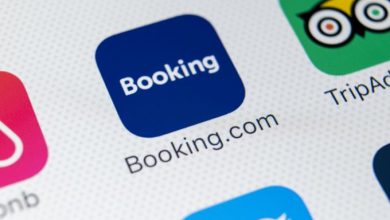
Data is like gold for hotel marketers, but only if it’s good data. Learn all about how bad data can make your marketing fall flat and discover our step-by-step process for cleaning up your database.
Even with the best intentions and training in place, it’s very easy for hotels to experience data inaccuracies. These issues typically occur as the result of data silos, missing information, duplicate profiles, and other errors upon entry that prevent your marketing efforts from reaching their full potential.
Bad data means that many of your marketing efforts will be in vain. Emails can get sent to inboxes that don’t exist, repeat guests can go unappreciated, targeting can be ineffective, and personalization can become impossible. Not only does that mean missed revenue for your hotel, but it also leads to misdiagnosing why marketing activity isn’t working. Thankfully, hoteliers with bad data can turn their CRM performance around with a data cleanse.
But what exactly is a data cleanse and how does it work? To help answer these questions and more, we’ve put together this article to highlight the most important concepts for both single properties and hotel portfolios alike.
Why is guest data important?
In our data-driven world, datasets are shared across multiple departments, including marketing, sales, operations, and guest services, to help drive satisfaction at all stages of the hotel experience. This means bad data can affect every aspect of your guest’s relationship with your property, from check-in to post-stay emails. When your data is inconsistent, all of your hotel teams lose valuable opportunities to connect with your guests.
Clean data is pivotal in driving higher engagement and revenue at your hotel by allowing you to create personalized communications that speak directly to each guest. Instead of wasting time and energy sending generic messaging with little to no real impact, clean data enables marketers to create targeted emails and campaigns that address individuals and demographic groups based on their behaviours, spend, and interests.
Clean data accurately captures details such as: Who your guests are, where they live, their preferred email address, their previous interactions with your hotel(s), total number of stays, cross-stays between multiple properties and total spend on ancillary revenue (F&B, spa experiences, golf, etc.)
If your guest profile doesn’t include the full name, phone number, physical address, and email address, you won’t be able to successfully communicate with that guest. Additionally, if you don’t understand that guest’s history with your hotel, you won’t know how to market to them. Maintaining up-to-date guest data also helps keep your hotel in good standing with new privacy regulations such as GDPR.
Having accurate guest counts across all market segments, geo regions, and channels can help determine who your best guests are, as well as create look-alike models and discover new ways to market specifically to these groups. At the end of the day, having clean data is imperative for reporting accuracy and Recency Frequency Monetary (RFM) analysis, which sets the foundation for all your future marketing campaigns.
Where does bad data come from?
In order to achieve truly personalized marketing, you need 100 percent confidence in basic guest info such as first name, last name, and email address. In the hospitality industry, these fields have the highest percentage of incomplete or incorrect data. Some common mistakes include combining the first names of multiple guests into one field as a shortcut to creating a secondary guest profile or putting titles and prefixes in the first name field.
When it comes to group reservations, the last-name field is sometimes used for the group title or meeting name. While these shortcuts are intended to help operations and management, they only benefit this one specific reservation and create roadblocks to any future marketing efforts.
Unfortunately, these mistakes and shortcuts will prevent your teams from getting accurate information about those guests’ preferences and spend at your hotel in the future. If you are considering a data cleanse, one of the first steps is to determine structure and best practices for everyone in your team to follow when it comes to data entry. These simple steps will go a long way when it comes to maintaining data integrity.
Is it time for a data cleanse?
While the practice of data cleansing is an ongoing process, you need to make sure you’re starting with a clean slate. For example, if you can’t personalize an email accurately due to misspelled names, missing email addresses, or duplicate names due to incorrect data entry, then you can’t perform simple email marketing campaigns. This is a big red flag that indicates it’s time to audit your data, clean up your profiles, and perhaps make additional changes at the hotel level to ensure your guest profiles are being updated accurately.
While the process will vary from property to property, the full data-cleanse process can typically be completed in about 90 days. However, depending on the complexities of the systems involved, the personnel required, and considerations for organizations with multiple properties, it may take longer.
Step-by-step guide to data cleansing
Initial analysis
The first step in the process is taking stock of your current data and business rules. This part of the process includes both cleansing and archiving, as well as determining where the holes are in your data so that you can create new business rules moving forward.
Creating new rules
The cleanse itself is really an implementation of the new business rules to create accurate guest-profile fields, including rules that address common data-entry errors like misspellings and extra characters (e.g., a double @ in an email). You will also need to understand and make specific rules for any issues that affect each channel, including: information submitted by a guest in an online form, information manually entered into the system by a front-desk associate and information coming in from a third-party OTA.
Most of all, this process should help you understand exactly how the data is flowing through your system and how it’s being impacted. There are often default issues within specific systems that can create inaccuracies, and these must be accounted for, including systems that may default to the country the hotel is located in if the guest profile doesn’t include a full address.
Once you understand where your data is currently and what is preventing it from becoming actionable, you can create channel-by-channel rules to make those necessary changes.
Merging and deduping
After the initial cleanse of your guest profiles, you should be able to see how many duplicate files were accidentally created for each guest. There are several reasons why one guest may have more than one profile in your system. For example, a guest may have booked a previous stay online, but if your front-desk associate couldn’t locate the profile easily (perhaps due to incomplete or misspelled information), they may have created a second profile for the guest upon their arrival to the hotel.
Once your data is clean, the system will be able to find these extra files and consolidate all the information into a single, accurate view of your guest and eliminate any extraneous versions — thus merging and/or deduping these profiles.
At this point in the process, you can also work with data appends to create additional considerations in your guest profile, including demographic or lifestyle information for even more precise targeting.
Maintenance and monitoring
Once the new rules are running, you are technically in maintenance mode. Maintaining a successful CRM with accurate data is an ongoing process. This means the project is never really “done.” You will need to continually monitor data in your CRM platform to ensure that the business rules are working the way you intended, and you’ll need to address any new issues as they arise by creating or updating those rules.
Updating data-capture practices
Performing a data cleanse can be very revealing, not just with the data itself, but how it is being collected. This allows hotels to discover new opportunities to improve operations and data-capture efforts at the hotel level — especially when it comes to accurate postal and email addresses.
If you have a loyalty program, membership submissions can come from multiple sources (e.g., a kiosk, at checkout, from a third-party booking engine, and so on). With a membership ID and other identifiers, you can use your PMS and membership data to search for matching criteria. This will only enhance the cleansing process (as a guest may have full membership info but bad data in their regular profile).
You can also promote loyalty by using your newly cleansed data to better determine RFM value. If you have two different profiles for the same person, you won’t know if they have booked previous stays, meaning you could miss a good candidate for your loyalty program.
Additional tips for your data cleanse
Review all incoming booking channels separately to quickly identify trends in system-generated data issues.
Isolate the required fields in the data-entry screens and ask reservation agents about their practices. This will help you create specific cleanse rules and address bad habits. For example, agents will enter the country code of the hotel if they do not know where the guest lives.
Create rules for common email-domain typos, such as recognizing “gnail” and “hotnail” as misspellings of “gmail” and “hotmail.”
Erase single-use OTA email addresses and generic mailboxes that are not marketable. This allows you to measure a true email capture rate and create opportunity for agents to collect the actual guest email at check-in, checkout, or through an append.
While the results of a data cleanse will vary from hotel to hotel, many hoteliers find that between 10 – 50 percent of their database is incomplete. Archiving, cleansing, and deduping the data leaves these hoteliers with rich, accurate data that can fuel marketing campaigns and provide a clearer picture of who guests are and how they’re booking their stays. As always, the hospitality data experts at Cendyn are here to help your CRM reach its true potential. Happy cleansing!
This post was originally published by Cendyn and is shared on Accom News with permission.







